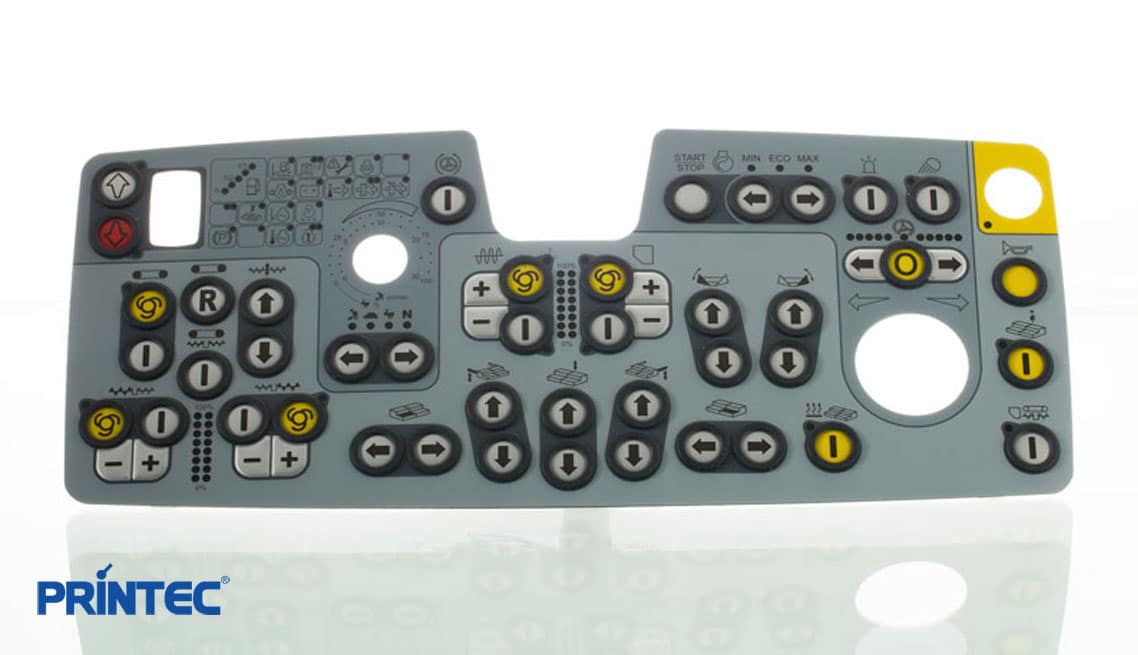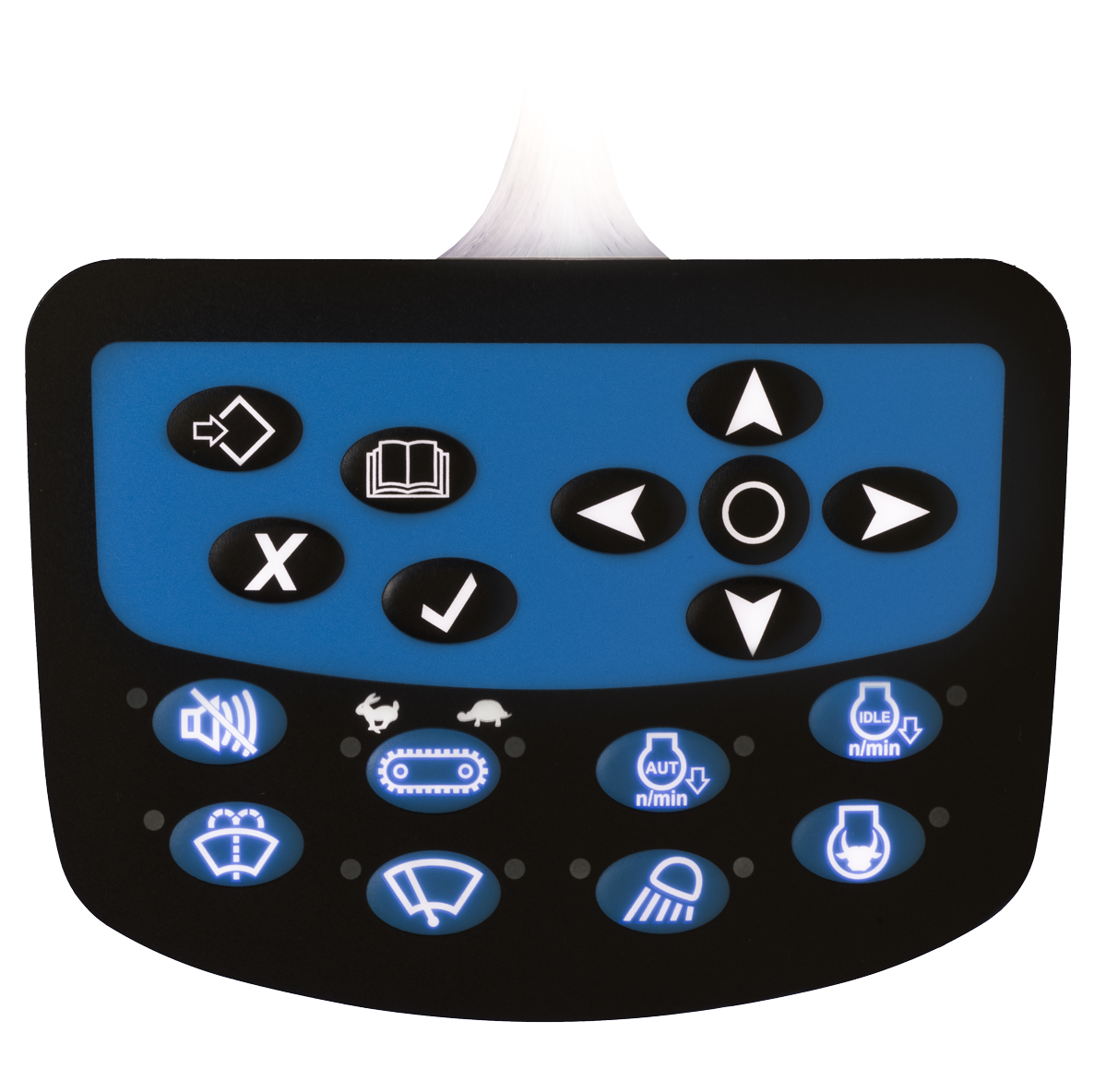Quality assurance is a top concern when selecting a membrane switch manufacturer for interfaces.
Everything About Membrane Layer Switch: Comprehending Its Layout and Capability
When you assume about the control user interfaces in modern-day devices, membrane buttons commonly come to mind. Let's discover what sets membrane layer switches apart from various other control systems.
What Are Membrane Buttons?

Membrane buttons can likewise be customized regarding form, size, and graphics, allowing suppliers to develop one-of-a-kind interfaces customized to certain products. Overall, membrane layer switches play a significant role in enhancing user experience across a large selection of applications.
Just How Membrane Layer Switches Over Job
When you press a key on a membrane switch, it turns on a straightforward yet efficient system. membrane switch manufacturer. The top layer, usually made of versatile material, presses down onto a conductive layer under it.
You'll notice that the responsive comments varies based on the button layout, offering either a soft click or an extra noticable feedback. As soon as you launch the secret, the membrane layer returns to its original setting, reopening the circuit and stopping the signal. This process takes place nearly instantly, making certain a receptive user experience.
Membrane layer buttons are popular due to their sturdiness and resistance to dust and moisture, making them perfect for various applications, from house devices to medical gadgets. Comprehending this procedure aids you value their widespread use.
Secret Parts of Membrane Switches
Understanding the key components of membrane switches is fundamental for grasping their capability and style. At the core, you'll find the visuals overlay, which gives the aesthetic user interface for customers. Under that, there's a spacer layer that divides the circuit layers, making sure that they don't make get in touch with up until pushed. The circuit layer is where the magic takes place; it includes conductive traces that finish the circuit when you push the button. Another important component is the adhesive backing, permitting the button to adhere to surfaces securely. The safety layer guards against environmental aspects and put on, prolonging the button's life expectancy. Each element plays a significant duty in making sure dependable efficiency and customer interaction. By comprehending these elements, you'll acquire insight right into exactly how membrane layer switches run and their significance in numerous applications.
Products Used in Membrane Layer Switch Design
The performance and resilience of membrane layer switches over greatly depend on the products used in their design. You normally encounter polyester and polycarbonate as primary substratums due to their exceptional strength and versatility. These products resist scratches and chemicals, making them perfect for demanding atmospheres.
The conductive layers usually utilize silver or carbon, selected for their integrity and conductivity. membrane switch manufacturer. Silver provides superior performance, while carbon is a cost-efficient alternative. For the overlay, you may think about a matte or shiny finish, depending upon your visual demands and user experience
Make specific to select adhesives that endure ecological factors like temperature and humidity. Selecting the right materials will certainly ensure your membrane layer button stands the examination of time.
Layout Factors To Consider for Membrane Layer Switches
While designing membrane layer switches, it's essential to take right into account various factors that affect their functionality and customer experience. Beginning by concentrating on the format and button dimension; make particular they're user-friendly and simple to navigate.
Confirm your style accommodates environmental variables, like wetness or temperature level variants, which can influence efficiency. By carefully considering these aspects, you'll produce a membrane switch that improves functionality and fulfillment.
Applications of Membrane Layer Buttons
Membrane layer buttons are functional elements found in various applications, from commercial tools to customer electronics. You'll see their influence in makers that need durable interfaces and in devices that gain from sleek designs. Understanding these applications aids you value the capability and usefulness of membrane layer switches in everyday technology.
Industrial Equipment Usage
When you're looking to boost the have a peek at this site capability of commercial equipment, membrane layer switches offer a trusted service that incorporates longevity with straightforward layout. These switches are ideal for severe environments, giving resistance to dirt, wetness, and chemicals. You'll find them in control panels for making equipments, a/c systems, More Bonuses and medical devices, where accuracy and responsiveness are crucial. Their low account indicates they fit perfectly into numerous devices, saving beneficial area while maintaining convenience of usage. With customizable graphics and backlighting options, you can create an intuitive user interface for drivers, enhancing performance and safety. Plus, their long life-span reduces maintenance expenses, making them a clever investment for your commercial applications. Embrace membrane switches to enhance your procedures and enhance overall efficiency.
Customer Electronics Combination
In the domain name of consumer electronics, membrane layer buttons play a vital duty in enhancing individual communication and tool functionality. You'll discover them in tools like microwaves, remotes, and video gaming consoles, offering a smooth method to interact with modern technology. Their smooth layout enables simple integration right into various items, making controls intuitive and easy to use. With their capacity to incorporate graphics and backlighting, you can take pleasure in a modern visual that enhances the gadget's overall appearance. Membrane layer switches also assure longevity and resistance to dirt and wetness, extending the life-span of your electronics. By choosing membrane layer switches, you enhance not simply the performance yet also the design of your gadgets, making day-to-day interactions smooth and enjoyable.
Benefits and Downsides of Membrane Layer Switches
While membrane layer buttons supply a range of benefits, they likewise come with some downsides that you must consider. One considerable benefit is their compact layout, making them excellent for space-constrained applications.

Membrane layer buttons can have a shorter life expectancy contrasted to mechanical buttons, especially under heavy use. They can also be less tactile, which might influence individual feedback during procedure. Stabilizing these pros and disadvantages will certainly aid you determine if membrane switches are the best fit for your job.
Often Asked Questions
How Much Time Do Membrane Switches Over Normally Last?
Membrane switches over typically last between 5 to ten years, depending upon usage and environmental conditions. You'll useful source intend to examine aspects like wear, direct exposure to wetness, and temperature changes to determine their durability properly.
Can Membrane Switches Over Be Personalized for Certain Styles?
Yes, you can personalize membrane switches to fit certain designs (membrane switch manufacturer). You'll have the freedom to select colors, shapes, and designs that match your task's needs, guaranteeing they blend seamlessly with your total aesthetic
What Is the Expense Range for Membrane Switch Manufacturing?
The price variety for membrane layer switch production typically drops between $1 and $10 per system, depending upon aspects like style complexity, quantity, and products. You can get quotes from suppliers to find the most effective choice.

Are Membrane Switches Water Resistant or Immune?
Membrane layer switches can be designed to be water-proof or resistant, relying on materials made use of and building and construction techniques. If you need them for damp atmospheres, guarantee you specify those requirements throughout the style process.
How Do Membrane Layer Switches Contrast to Standard Switches?
Membrane buttons are typically thinner and more adaptable than conventional buttons, offering a streamlined design. They're often easier to clean up and integrate, however might not provide the tactile feedback you're used to with mechanical options.
Verdict
